Heat-seeking behaviour in mosquitoes, mass spawning in coral reefs, social organization in ants, fear in rats and tissue regeneration in newts go under the microscope in Episode 26 of the eLife Podcast...
In this episode
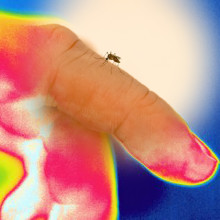
00:34 - Feel the heat: mosquitoes sense warmth
Feel the heat: mosquitoes sense warmth
with Leslie Vosshall, from the Rockerfeller University, New York
What's the most dangerous animal in the world? Most people immediately picture snakes, sharks or venemous spiders, but the real answer is something  much smaller and easy to overlook: it's the mosquito. This insect group is singly responsible for millions of human deaths every year because, when they bite us, they spread infectious diseases like malaria, dengue and yellow fever. But how do they find us in the first place? Smell plays a big part, but so does temperature, as Leslie Vosshall explains to Chris Smith...
much smaller and easy to overlook: it's the mosquito. This insect group is singly responsible for millions of human deaths every year because, when they bite us, they spread infectious diseases like malaria, dengue and yellow fever. But how do they find us in the first place? Smell plays a big part, but so does temperature, as Leslie Vosshall explains to Chris Smith...
Leslie - The day job of the female mosquito is to go out and find as many humans as possible and bite them. And so, part of that is being attracted to the warm skin that humans have. So, we've discovered the function of a single gene is required for these animals to go after specifically human body heat and not overshoot and go toward things that are inappropriately hot.
Chris - How do they feel the heat? Is that through their feet, antennae, other body parts? Do you know?
Leslie - That's a really good question. So we don't know and that's something that definitely needs to be resolved in the future so we think at a minimum at the very tips of their antennae, they have cells that can sort of feel the heat as they're flying around. So, those cells are sensitive to heat.
Chris - And what are those cells doing to actually detect temperature?
Leslie - For an insect to figure out whether it's coming close to a warm human, it needs to be able to have a protein that will respond to heat. And so, the particular protein that we've been studying is called TRPA1. So, it's a protein that when you heat it up, it becomes activated so it changes its shape. It causes ions to flow into the cell and bottom line, it makes the neuron very excited and that excitement is then transferred to the brain.
Chris - How did you then work out what role that was playing in mosquitoes tracking down hot bodies?
Leslie - The first thing that we did was go in. My student Roman Corfas who is responsible for the entire study. He first really did a detailed analysis of what exactly are mosquitoes doing when there's something hot. So he figured out exactly how sensitive they are to heat. So just 2.5 degrees Celsius above room temperature, they already know there's something interesting and they fly toward it. And then when the surface gets hotter than human skin, a normal mosquito will avoid it. They don't like things that are too hot. He then used these amazing new techniques to delete a single gene. Now we have a mutant mosquito that's missing TRPA1 and we ask, "What does it do?" So, our TRPA1 mutants, they still really love humans and they still will fly toward warm surfaces. But when that surface gets superhot, they don't care. They like it. They like it more and they hang around until you make it crazy hot and then they leave. From that, we assume that TRPA1 now is a major player in telling the mosquito, "Okay, stop. It's too hot. Go away!"
Chris - At the same time though they still fancied the hot surface which could be a warm body, didn't they? So there must be something else going on as well that enables them to detect lower levels of heat. So you found a thing that repels them from very hot surfaces and helps them make the discrimination but it's not the whole story.
Leslie - That's exactly right. So there's two halves to the story. We've solved the second ones. So the first mysterious part, how do they recognise that there's something a little bit warmer than the ambient air and to detect that and like it, and fly toward it? We are continuing to look actively for what that magic molecule is. That's a very important piece of the puzzle for how mosquitoes become attracted to humans. So, we found the other part of the puzzle: How do they have like going to things that are warmer than human skin? Also extremely important because if they get distracted by things that are too hot, it would make them inefficient hunters of humans.
Chris - And you could potentially exploit both of those in order to work out ways to deter them from biting humans.
Leslie - Absolutely, and so everybody in the whole world particularly my relatives at the holidays ask have we figured out a way to stop humans from being bitten. So it's a big imperative for every human on Earth. And so, knowing what the strategies are by which mosquitoes use temperature to find humans is really a useful piece of information. And so, a lot of the traps that are being designed to trap out mosquitoes are starting to play with these parameters to mimic humans so heat, carbon dioxide from the breath, stinky human odour. Our discovery indicates that you have to be very careful in tuning the temperature of these traps.
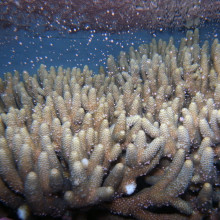
05:19 - Coral mass-spawning
Coral mass-spawning
with Oren Levy, Bar-Ilan University in Israel
Arguably, one of the wonders of the underwater world is the annual mass spawning of corals. 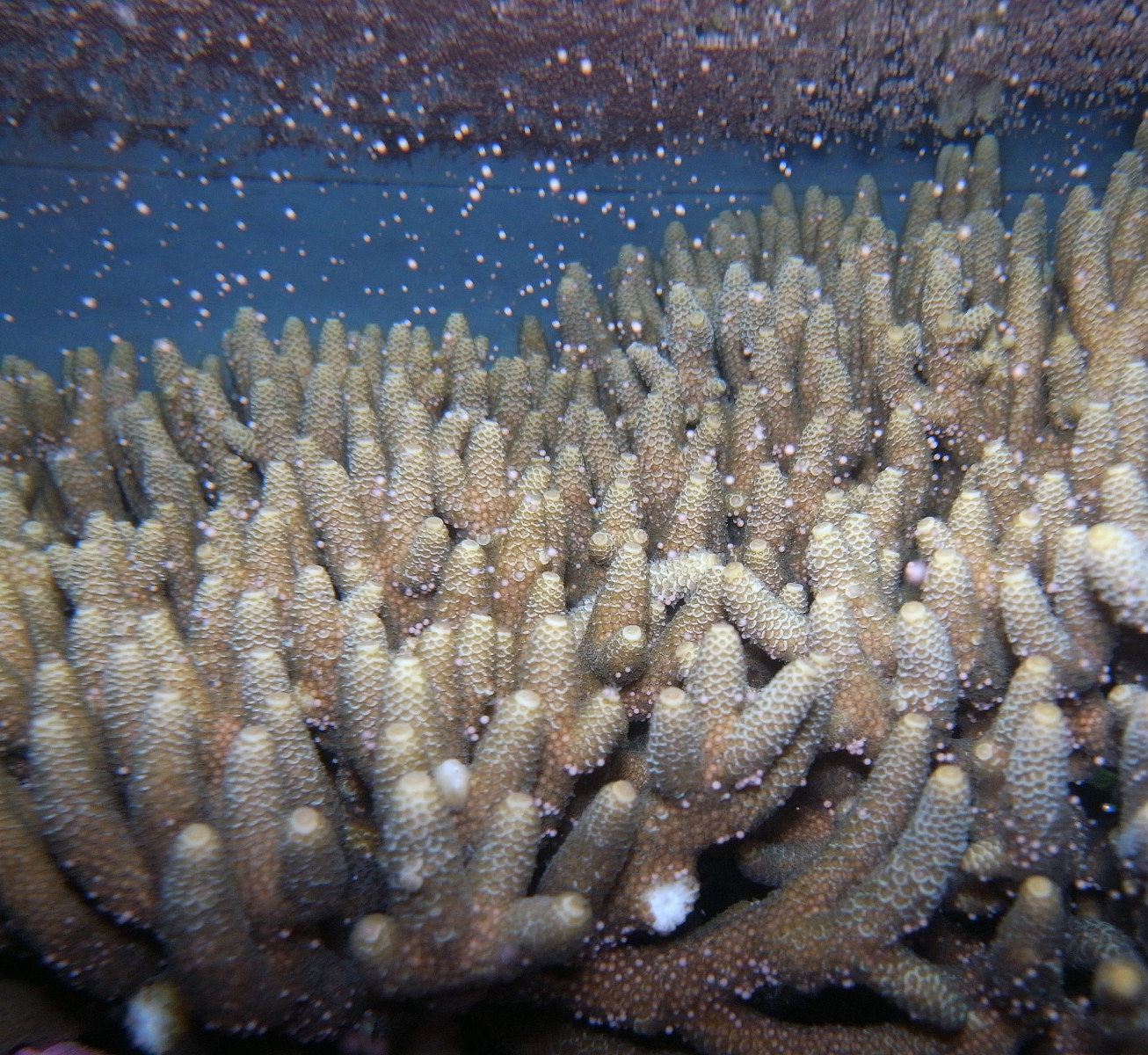 Incredibly, on a single day each year, they simultaneously release their eggs and sperm into the water. We know it has something to do with the moon cycle and light levels, but what genes are involved and how do they control the process? Speaking to Chris Smith, Oren Levy is at Bar-Ilan University in Israel...
Incredibly, on a single day each year, they simultaneously release their eggs and sperm into the water. We know it has something to do with the moon cycle and light levels, but what genes are involved and how do they control the process? Speaking to Chris Smith, Oren Levy is at Bar-Ilan University in Israel...
Oren - Between 2005 to 2007, I was a postdoc in Australia in the University of Queensland. I was fascinated by what's called the mass spawning event which is a mass coral reproduction when the coral release eggs and sperm into the water column in a window of one day a year, usually during November, a few days after the full moon. I was very curious how corals can actually tune their behaviour year after year to a specific night in a specific window of time when more than 130 coral species release their gametes which meaning sperms and eggs into the water column for fertilisation. So basically, this started the whole questioning how the machinery can time this kind of behaviour.
Chris - Because obviously, one has to synchronise appropriately because if they don't, in a vast environment like the ocean, then a few eggs and a few are never going to meet otherwise, are they?
Oren - Exactly. So, there's no point: if there is no synchronisation or desynchronisation in this process probably will not have any future, new cohorts. So, we wanted actually to explore more in depth using different molecular tools to understand if there are specific genes that involve in this kind of synchronisation and releasing the gamete into the water column in a specific time of night. We decided to go back to Heron Island in the Great Barrier Reef to try and make a large experiment, when we actually took corals for the reef, a few nights before the full moon of November which is the night of the spawning. We decided every night for a few days to take some specific pieces from the coral's colony to detect which genes are expressing directly during the spawning.
Chris - Did you catch the samples or remove those samples at the same time every day and did you also get a snapshot of what was happening during the spawning so you can see what the normal basal level of gene expression is, what genes are on or off, at what level, but also, how that changes when the spawning kicks in?
Oren - Yes. So basically, we took the corals out of the reef two nights before the full moon. The actual spawning when the gamete were releasing into the water column were on the 16th of 11/2011, which was almost 5 days after the full moon. So we basically couldn't guess exactly when this event is going to happen. So every day, actually we sampled some small pieces from the corals. So we managed to have the history and the baseline before the spawning event.
Chris - What switch is on, what switch is off when the spawning is actually kicking in?
Oren - So we found like 200 specific genes that are showing very high expression level during the spawning event. These genes are related basically to what's called G protein. G proteins are some kind of receptor that can detect different signals from the environment like different pheromones, different neuropeptides or different changes in light levels in other chemical signalling for the environment.
Chris - So what do you think is going on then? Are the coral cells collectively discussing whether it's the right time to do the release through a mixture of detecting at the level of the individual cell but then also having a chemical conversation? So there's a group decision and when the signal gets appropriately strong amongst the group, that then reaches some kind of threshold triggering the release of the gametes.
Oren - Yes. So we think there is some kind of a threshold in this. We cannot say specifically what is the final signal causing the gamete release. We know there are certain environmental condition like if it is too windy or too wavy or it's raining, the coral will postpone the gamete release a few days later. So they will all wait for specific conditions to maximise its own abilities later on.
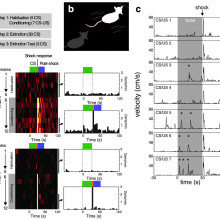
10:38 - Have no fear
Have no fear
with Becca Shansky, Northeastern University, Boston
Over a century ago, Pavlov showed that, when he fed his dogs and rang a dinner bell at the same time, the dogs soon learned the association between the two and, after a while,  the dinner bell alone was enough to make the animals salivate. Similar experiments can be done with rats, where a tone forewarns of a small ensuing electric shock. Rather than salivate though, the rats freeze, showing that they are fearful of the shock they anticipate receiving. But when she was using this approach, some unusual behaviour by some of her subjects made Becca Shansky realise that, for decades, we might have been missing something critical, as she explains to Chris Smith...
the dinner bell alone was enough to make the animals salivate. Similar experiments can be done with rats, where a tone forewarns of a small ensuing electric shock. Rather than salivate though, the rats freeze, showing that they are fearful of the shock they anticipate receiving. But when she was using this approach, some unusual behaviour by some of her subjects made Becca Shansky realise that, for decades, we might have been missing something critical, as she explains to Chris Smith...
Rebecca - We were originally interested in animals that naturally seem to have very low levels of fear and see if there were differences in the brains of these animals. What we found was that there were females that seem to be expressing low levels of fear. But then my graduate student was looking at the videos - so we take videos during the entire experiment and she said, "You know, some of these females, they're not freezing but when the tone comes on, they start running around like crazy. It's hard to say that these animals don't look afraid." So we said, "Is there a way that we can try and quantify this? Is this a real thing or is this just some random weird animal that we should just take out of analysis or something like that?"
Chris - And so at this stage, you're saying, "Well perhaps, we're calling fear incorrectly. Perhaps there are other manifestations of fear that aren't just animals freezing. Perhaps it's animals also running very fast."
Rebecca - Exactly. So maybe instead of freezing, for some animals, their instinct is to try and escape. It's not very common and I think part of the reason that hasn't been really described before is that 95 per cent of these kinds of experiment have been done in male animals and not female animals. So, it's possible that it just hasn't been observed.
Chris - And when you did the reanalysis, does it hold water? Do they show this running behaviour rather than freezing?
Rebecca - Yes. So that's what it looks like and about 40 per cent of the females that we analysed, instead of freezing, they start to run around. The analysis that we conducted allows us to detect individual instances of this escape behaviour which we, in the paper called Darting. What we saw is that in some animals, what you normally see if you're measuring freezing is that freezing increases every time the tone gets presented and then occurs with a shock after it. And so, you look at sort of an upward trend in freezing as a representation that the animal's learning is getting better and they really know that that tone means they're going to get shocked. What we see in some of these females is the exact same trend except we see an increase in this darting behaviour instead of freezing.
Chris - Just the females or do both males and females do this?
Rebecca - We found a very, very small percentage of males that qualified as darters. Only around 10 per cent of the males did. So, it's still up for debate whether or not this is something that we can truly say the males are doing at the same level that the females are.
Chris - Why do you think they do it at all?
Rebecca - Well, I think that's going to be the 64,000 dollar question as we move forward with the research. What was really interesting about these animals that are darting as they learn what that tone means, is that there were some interesting behavioural effects when we did a couple more tests later, a couple of days later. It seems that animals that exhibited this escape-like behaviour had low levels of fear in any measure two days later in another kind of test that we did. And so, there seems to be possibly something protective or adaptive about trying to escape during a stressful event. So, that's one of the more provocative findings: there may be in a sort of long term consequences that are positive of having this kind of behavioural response as opposed to a freezing response.
Chris - What are the implications of what you found and what has been missed for many years previously?
Rebecca - What it shows is that it's possible that female rats have a more diverse repertoire of fear expression. And so, that's something that's going to have to be taken into consideration because the biggest problem that this sort of highlights is that if you're only looking at freezing, animals that are fearful are being presented as not fearful. If your freezing levels are low because you're engaging this darting behaviour then that's a problem for interpreting your data.
15:50 - Ant evolutionary conundrum
Ant evolutionary conundrum
with Martin Nowak, Harvard University
Social insects, like ants, seem to fly in the face of evolution, because workers have to sacrifice their own opportunity to reproduce for the overall good of the colony. 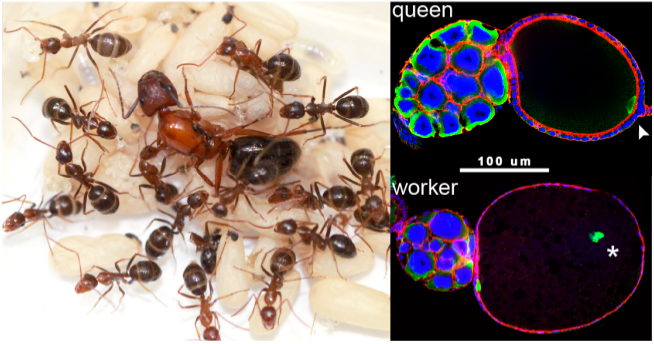 This is particularly hard to reconcile with situations where the queen has mated with multiple males, meaning that the workers, were they to breed, would have the potential to introduce greater diversity into the population. But now a new mathematical analysis, by Harvard's Martin Nowak, shows that, so long as the reproductive rate of the colony remains highly efficient, it's still a viable evolutionary proposition, even if the queen has mated with multiple males. Chris Smith hears how..
This is particularly hard to reconcile with situations where the queen has mated with multiple males, meaning that the workers, were they to breed, would have the potential to introduce greater diversity into the population. But now a new mathematical analysis, by Harvard's Martin Nowak, shows that, so long as the reproductive rate of the colony remains highly efficient, it's still a viable evolutionary proposition, even if the queen has mated with multiple males. Chris Smith hears how..
Martin - Socially, insects are specific for most biological adaptation because they're hugely successful. So only 2 per cent of insect species are social but they make up 50 per cent of insect biomass. So here, we have a phenomenon called the super organism, which is seen as a distinct form biological organisation. The big question is, why does natural selection build individuals that do not reproduce themselves but help an other individual namely the queen reproduce? It is a conundrum that was already realised by Charles Darwin.
Chris - How do we think this came about then? What's the origin of this behaviour and how do we think natural selection allows it?
Martin - Natural selection can allow this behaviour if the overall efficiency of this form of reproduction is better than the solitary one. So what we have to say is that solitary reproduction is straightforward exponential power of growth. So if you want to change that lifestyle, you have to beat the power of exponential growth. That can happen if basically, the queen gets a huge benefit from the offspring that stay around. That benefit has to be coming in terms of a much greater rate at which she can produce fertile offspring and also defend those offspring.
Chris - How have you proved that those are the constraints and those are the requirements for this to happen? How did you do that?
Martin - So, that's a simple calculation in terms of the mathematics of evolutionary dynamics. So you set up the different genetic variants and you write down equations of population genetics to ask what is the most successful, the more successful way of reproduction. In that paper here, we actually analysed a second problem and this is assuming that insect colonies are already there who should lay the male eggs. In the ants for example, the queen makes male and female eggs. The workers that are not fertilised, they could only lay male eggs. In the colony where there's one fertilised females namely the queen and all other females are not fertilised, it is very clear that all the female offspring have to come from the queen. But there's a conflict over who lays the male eggs because they could come either from the queen or from the worker.
Chris - In the average colony though the workers are going to carry any genetic information relevant to being male which is identical to that genetic information for maleness carried by the queen. So you wouldn't actually know and there wouldn't really be any advantage, would there or perhaps there would to the workers having male offspring or the queen laying male offspring?
Martin - The genetic material is not exactly identical because the queen could have made it with one male or could have made it with several males. It was previously believed before we did the analysis for our paper that it is very important for the queen to mate with only this one male and this would then allow for the evolution of sterile workers. If the queen has mated with several males, workers would still prefer to lay their own eggs.
Chris - What is the actual status quo though? Does the queen routinely mate with multiple males because bees certainly do don't they?
Martin - It depends on the species. Some species queens lay mate is one male and other species queen mate with several males. So it does depend on the species. What our analysis actually shows is that for the evolution of non-reproductive workers, whether or not, the queen has mated with one or several males is actually not the primary question. So we find that alleles that lead to worker sterility can be favoured by natural selection in both cases. In cases where the queen has mated once and in cases that the queen has mated several times. The more crucial relationship is how does the colony efficiency increase with the fraction of sterile workers and that's a quantity that was largely neglected in the previous literature.
Chris - So putting all of this together, how does this paper move us forward and what are the ultimate conclusions here? What have you found that changes our thinking?
Martin - I think the way how the paper moves us forward is by developing a precise mathematic theory for social evolution. A theory that really asks the question, how does natural selection act on genes that operate in colonies and in groups of social insects? I think this is what really leads us forward.
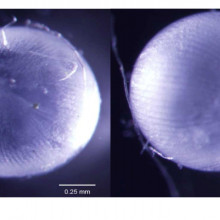
21:35 - An eye for an eye
An eye for an eye
with Panagiotis Tsonis, University of Dayton, Ohio
A limb removed from a mammal never regrows. But subject a newt, and a range of other creatures like it, to the same treatment and, eventually, the missing leg will regenerate. 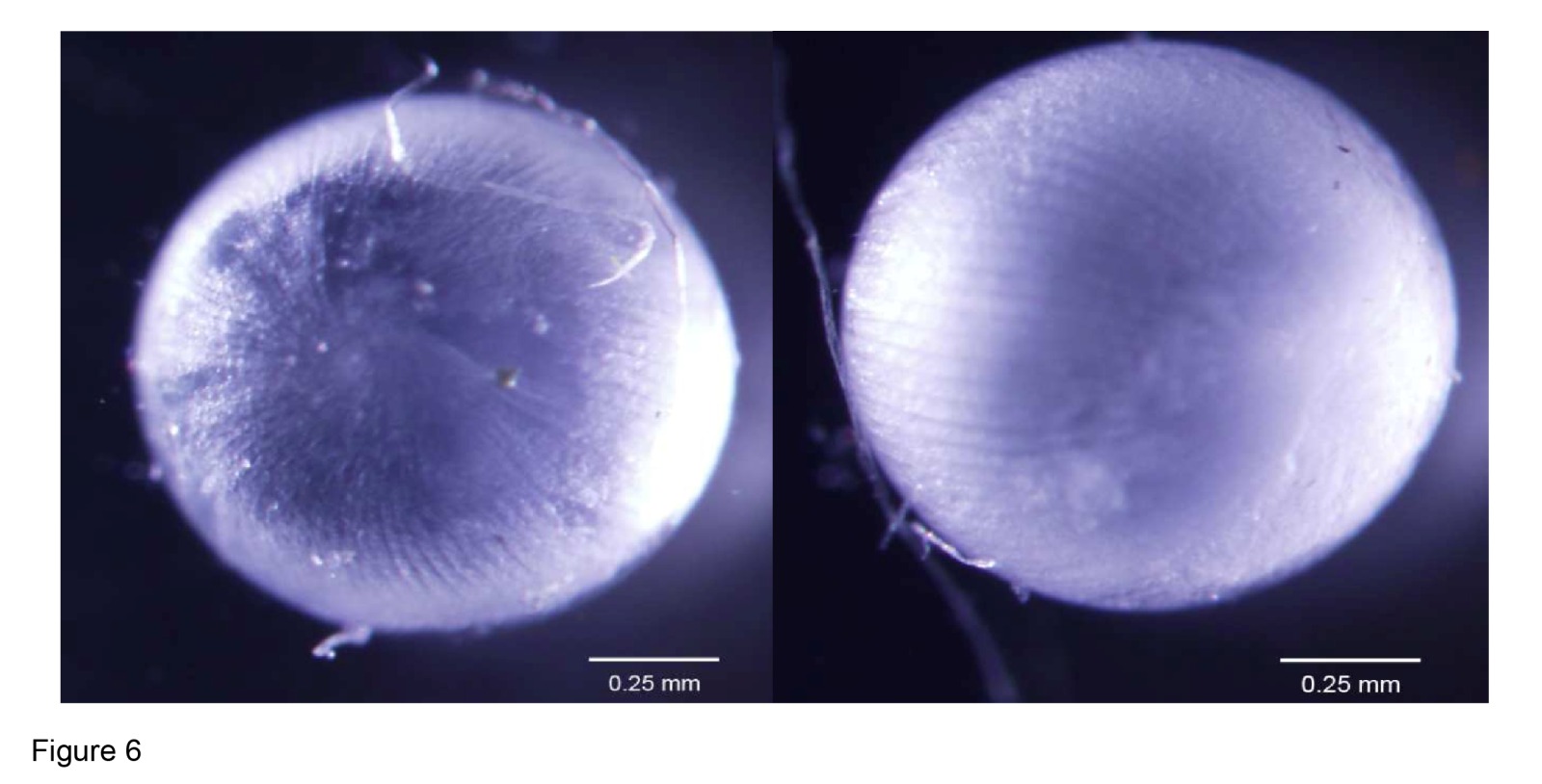 The same is true of other body parts too. But how long can these animals keep up this feat? And does it eventual fail, or are the regenerated parts as good as new? To find out, Panagiotis Tsonis and his colleagues have now done the incredible experiment of removing the lenses from the eyes of the same newts for 19 years in succession, as he explained to Chris Smith...
The same is true of other body parts too. But how long can these animals keep up this feat? And does it eventual fail, or are the regenerated parts as good as new? To find out, Panagiotis Tsonis and his colleagues have now done the incredible experiment of removing the lenses from the eyes of the same newts for 19 years in succession, as he explained to Chris Smith...
Panagiotis - The experiment was to remove the legs from the same animal 19 times so we have this leek in the cornea, we remove the lens, the cornea heals within a day and then the lens regenerates from the iris within 30 to 40 days.
Chris - Is the question then, well, if I compare a young newt, it would do this much better and it would do it much more faithfully than if I do this in an old newt that has done it many times.
Panagiotis - Yes. That was one of the questions. Is this an issue or not? And we proved that it is not. Actually, a newt which is very old and has regenerated repeatedly up to 19 times, the lens regeneration in that newt is almost identical structurally and morphologically and also in terms of gene expression when you do that in a young newt.
Chris - Why shouldn't it be faithfully repeated 19 years after it first happened?
Panagiotis - Well that's exactly the hypothesis that we believe that the newt would regenerate faithfully because otherwise, it wouldn't make any sense. So, we set to do this in this work - was actually started by my mentor Goro Eguchi in Japan and then we finished it to prove exactly this point. And we did prove it in the last paper, this eLife paper especially with global gene expression patterns and comparing with other tissues as well to show that the number 19 lens shows no difference whatsoever in gene expression patterns when you compare with the lens on a young animal that did not regenerate at all.
Chris - You mentioned looking at other tissues as well. So what happens? If you were to do this experiment, not with the eye but in another part of the body, do you see the same faithful regenerative effort or does the fact that it's not in an enclosed system inside the animal make a difference?
Panagiotis - We did not study regeneration of other parts, but what we did was to take the tail and also the iris from the same animals. Now the three key areas are the tail from that old animal has never regenerated. Therefore, it would be old. But the lens of the same animal has regenerated 19 times. So, what we show is that the old tail when compared with a young tail shows clear marks of ageing while the lens does not. So in a sense, it seems like keeping regenerating a tissue, it also keeps it young. It has not aged.
Chris - But that sort of flies in the face of what we understand about the Hayflick number of cells - the number of times a cell can divide before it becomes aged or senescent. Cells, if you continue to flog them into cell division eventually do give up the ghosts. So you're saying on the other hand, making them continue to divide keeps them young. So how do you reconcile your findings with what we regard as established dogma.
Panagiotis - Well, there are two ways to address this question. One is that probably, the newt has an ability to take care of senescent cells, removing them so they don't interfere with regeneration. Second is that the newt has another mechanisms that protect them in order to regenerate and to faithfully ensure that the regeneration will be taking place.
Chris - Why should these animals be endowed with this formidable regenerative ability then? They have anti-senescence mechanisms, they can regenerate tissues, and the more they regenerate, the more youthful they become. I mean, it sounds like the fountain of youth. Why should they have that? Why have they evolved to be able to do this?
Panagiotis - Well, this is a one million dollar question, even more than that. We don't really know why they do that. It is as you said, really remarkable. It's amazing that they can regenerate so many tissues, so many times at old age. Obviously, they have an amazing ability to reprogram and this is what we're trying to understand - how they do it and if it is possible to apply such mechanism in another animal. I think it's feasible but it requires a lot of work to be done and probably, we need to have an open mind on this. We need to do experiments like the one we did for 18 years that normally, people would not do.
Chris - Now obviously, when they formed a growing organism in the first place in an egg, and that turned into a lens in a young baby newt that was much smaller than the adult newt, the environment that those cells grew in was very different than the environment of the adult. So, how do those cells know the scale and stature that they need to achieve and presumably, the cell number that they need to achieve to make a much bigger body part once you're an adult that you've got to regenerate than when you were little?
Panagiotis - Excellent question. Embryonically, the lens comes from the surface ectoderm but for regeneration, it comes from the iris. Now the iris is completely different origin embryonically. So, not only the newt has the ability to reprogram another tissue to provide the lens, but also, the numbering of cells that you said and the size, this is also an amazing property of any other animal that regenerates. They do that perfectly. So, maybe in the beginning, we start with a signal that triggers regeneration or the differentiation and regeneration. And then I think that old embryonic developmental programme takes over and differentiates the organ to the right size and the right morphology.
- Previous Top Scientific Moments of 2015
- Next Why Do Dogs Slurp So Sloppily?










Comments
Add a comment